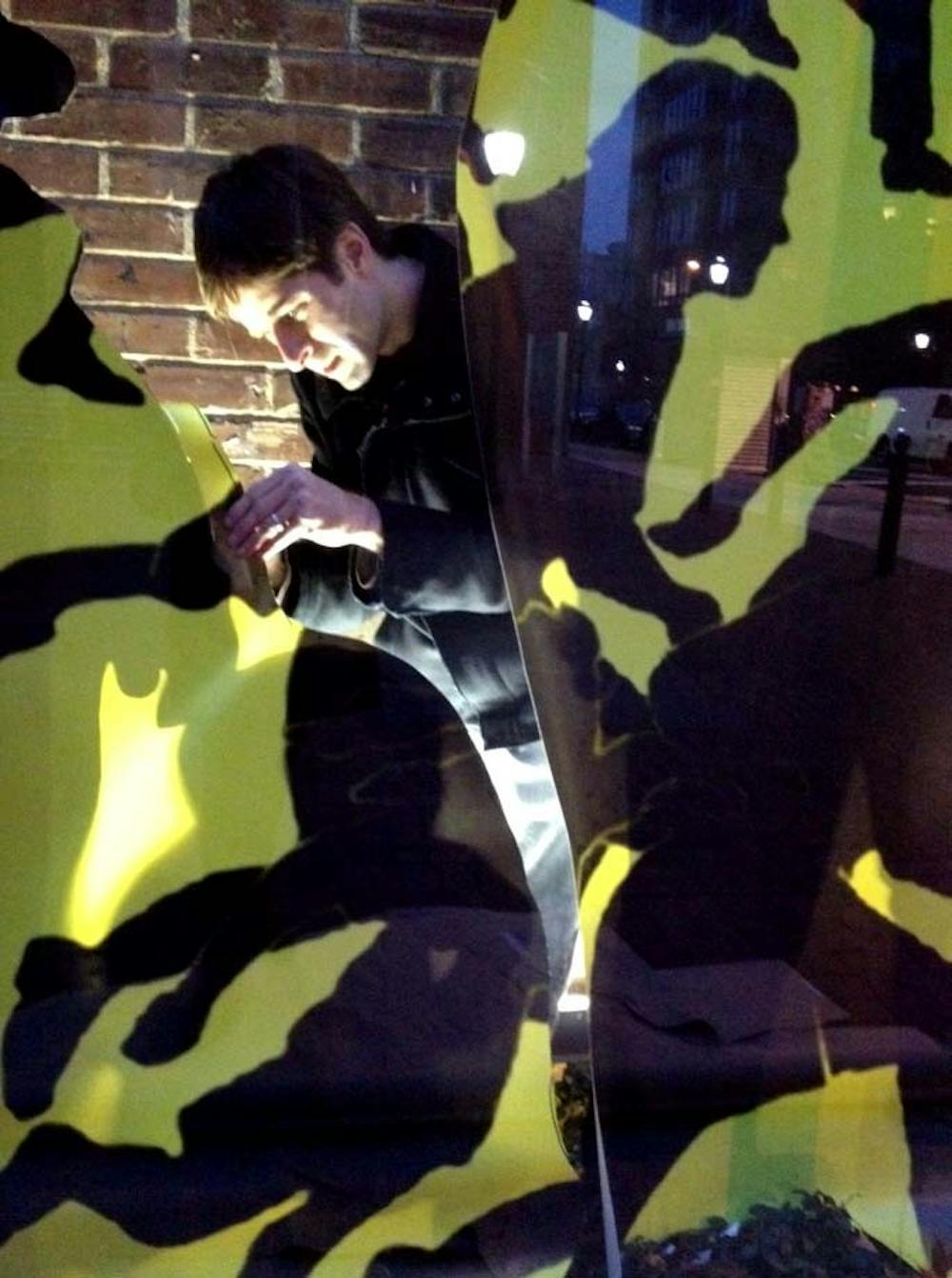Near the rubble and construction fences lining the Charles Addams Fine Arts Hall, the newly redesigned Addams Family Silhouette is causing passersby to do a double-take.
The designer, second-year School of Design graduate student Daniel Oliva, was spurred to create the piece after completing a project for his class, “Advanced Graphic Design and Typography”, taught by fine arts lecturer David Comberg. For the project, Comberg’s class collaborated with Director of the Undergraduate Fine Arts Program Ken Lum to redefine the department’s image on campus through the use of engaging and active art.
One of the primary focuses of the class and of the project was the concept of critical design — a more active approach to the field of design. This means creating works that ask questions of and interact with the viewer rather than merely dictating ideas to him.
“It is about looking at design as an active and engaging process,” Comberg said of the course’s focus. “There is an emphasis on choosing an issue and emphasizing that issue through design.”
For Oliva, two specific issues inspired his piece — the lack of interaction between the original silhouette and the community and the dichotomy between two separate ideas of family.
“What I thought about [when I saw this statue] was this idea of family, and the Addams family being a cartoon family,” Oliva said of the original work.
He added that the silhouette reminded him of highway road signs found in southern California of immigrant families crossing the road, meant to alert drivers of their presence.
These road signs even inspired the title of his piece — “Migration.”
Related
11/12/12: Art exhibit outside of Hillel commemorates Kristallnacht
7/11/12: Penn to select new director of undergrad Fine Arts program
3/15/12: Art installation on Locust Walk inspired by ‘China’s reality’
Oliva’s piece was installed on Dec. 2, consisting of a weatherproof vinyl sheet affixed to the original silhouette by magnets in a way that doesn’t damage its structure. The cover will be removed on Dec. 19.
According to Comberg, the work was “intended to stop you in your tracks and get you to think about something you haven’t thought about before.”
For some pedestrians, this new addition was acknowledged but not appreciated.
“I read Charles Addams’ books as a kid and that was the coolest part about this building, and then they put the glass on it and now, they’re painting on it,” said Assistant Dean for Research in Nursing Abigail Cohen, a passerby on 36th Street Walk.
When informed that this was only a temporary piece, she added that she thought the design was interesting but would have rather seen it somewhere else.
Others who walked by the piece, such as Maria Armakola, a doctoral student at the Perelman School of Medicine, admired its yellow and black color contrast. “It’s beautiful actually,” she said.
When Oliva presented “Migration” as part of his end-of-semester critique on Saturday, he received mixed sentiments from the audience. Some thought the work has wider implications than Oliva’s description of it — including the political undertones of border crossing — and makes people think about where they are going in life.
Others claimed that Oliva’s intervention drew too much attention away from the original silhouette, and one even called it goofy.
In response to negative comments about the piece, Comberg said this is an “appropriate response to the critical art and design that’s been installed” and that it is part of the dialogue that the artwork is meant to inspire.
Lum sees this piece, and the project that inspired it, as a way to make fine arts at Penn a more engaged and active discipline.
“Fine arts needs to be more energized,” he said. “I don’t want students to think of art as already defined for them. They should define art for themselves.”
On what others can gain from his piece, Oliva said he “hopes it reminds people that the original structure is there but that it also provides an experience where at first they might be confused, and just see shapes, but then discern that there are people in these shapes.”



